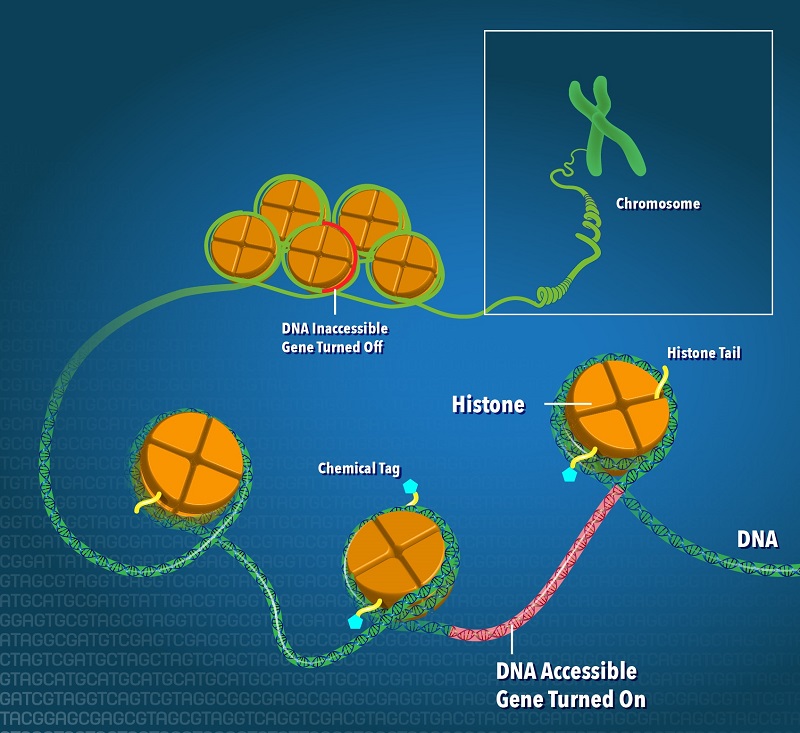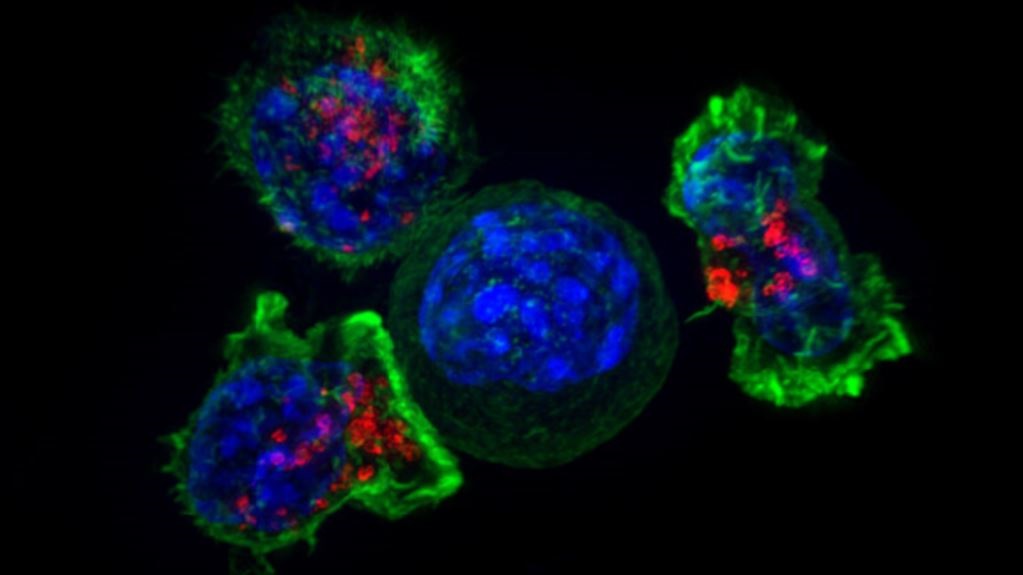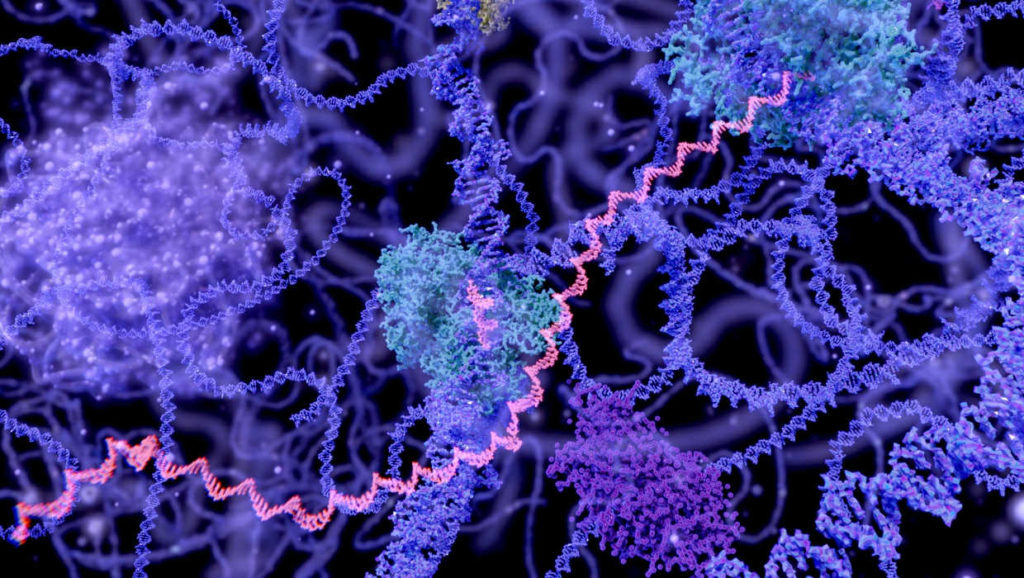Research Links the Epigenome to Aging, Cancer and Disease
Summary: The epigenome is in the spotlight recently as researchers discovered two genetic aging clocks in the human body. Epigenetics plays a significant role in how we age and whether or not we will get cancer or other diseases. Researchers have developed cancer drugs that target the epigenome. [Update 10/18/2017: The name of this article has changed from “The Epigenome in Cancer and Disease”]
Understanding the human epigenome is important because geroscientists are starting to believe that epigenetics plays a significant role in how we age and whether or not we will get cancer or other diseases.
The epigenome is in the spotlight as researchers discovered two genetic aging clocks in the human body in the past few months. First, geroscientists found a genetic aging clock in the brain, followed shortly after that when researchers announced they discovered a master clock in the epigenome that controls aging in the body. As well, it’s not just DNA damage that can cause cancer and other diseases, but changes to your epigenome can also cause these dreaded ailments.
Until recently, physicians thought that diseases were caused mainly by infectious agents such as bacteria and viruses, toxins or changes in DNA. However, researchers have demonstrated that changes in the epigenome can also cause diseases like type 2 diabetes and cancer. With this in mind, researchers are testing potential drug treatments that might repair disease-related epigenetic changes. Some therapies which target the epigenome are already being used to treat certain cancers.
The Epigenome
Every living thing has a genome which, is like a blueprint, in that it contains all of the information required to build and maintain an organism. The genome is an organism’s complete set of genes, made up of DNA (deoxyribonucleic acid).
If a genome is a blueprint, then the epigenome is set of changes to the building plans and instructions on how to interpret them. The epigenome is a set of instructions that are added to the genome or on top of it. Just like DNA, the epigenome is made out of many molecules. Our human genome is the complete assembly of DNA, about 3 billion base pairs in all, that makes each of us unique. Our DNA contains the blueprint and assembly instructions for building the proteins that carry out a variety of functions in a cell. The epigenome is made up of molecules and proteins that attach to DNA.
The epigenome runs the show by turning genes off or on, and controlling protein production in particular cells. When epigenomic components attach to DNA and modify its function, they are said to have marked the genome. These epigenetic marks do not change the sequence of the DNA. Instead, they change the way cells interpret the DNA’s instructions. When cells divide, epigenetic marks are sometimes passed on from cell to cell. Additionally, epigenetic marks can be passed down from one generation to the next.
How The Epigenome Works
An epigenome is formed by adding chemical compounds on top the genome as a way to regulate or modify the activity of the genes. The chemical compounds of the epigenome are not part of the genome, and not part of the DNA. Instead, they are attachments which ride on top of the DNA. Epigenomic modifications remain as cells divide and sometimes are inherited by the next the generations. Environmental influences, such as an individual’s diet, drugs and exposure to cigarette smoke and other pollutants, can also modify the epigenome. An epigenetic trait as is an inheritable trait resulting from changes in a chromosome without alterations in the DNA sequence.

Essentially, the epigenome controls what job a cell will have when it grows up, in a process known as tissue differentiation. Your body has trillions of cells, each specialized for a different function, such as muscle cell or brain cell. While the cells play different roles, each carries the same genetic code. Cells are instructed to play various roles by merely turning specific genes on or off. Red blood cells have the genes turned on that tell them to make proteins that carry oxygen to the rest of the body. On the other hand cells in the eye have turned on the genes to produce unique proteins that can detect light.
The epigenome is a collection of chemical modifications to the DNA and DNA-associated proteins in the cell. These modifications alter gene expression and are part of the body’s development process.
Genomes exert influence through a process called DNA methylation. The body’s epigenetic mechanisms use methyl groups, a natural compound found in some food sources, to tag a region of DNA and activate or repress specific genes. The body also uses proteins called histones in its bag of tricks. DNA winds around histones for gene regulation and compaction. Histones have tails, used to control the availability of genes in a particular region of the genome. Like a key operates a lock, epigenetic factors bind to histone tails to alter the availability of a portion of DNA. When epigenetic factor bind to the tails, they control how tightly the histones is wrapped around the DNA. All of these factors and processes can affect people’s health and possibly cause autoimmune diseases, cancer, diabetes, mental disorders, or other illnesses.
The body’s epigenetic system uses two types of marks to assert influence over your genetic code. The first type of mark is called DNA methylation and directly affects the DNA in a genome. In the DNA methylation process, proteins attach chemical tags called methyl groups to the specific places in the DNA molecule. The methyl group marks are left behind to let cells know which genes are on and which are off.
The second kind of mark is called histone modification and affects DNA indirectly. In the cell, DNA is wrapped around histone proteins, forming spool-like structures, as shown in the illustration. These spools enable the long DNA molecules to be wound up neatly. Epigenetic mechanisms can attach a variety of chemical tags to histones. Cells use these tags to know whether or not that region of DNA should be used or ignored.

The Environment Changes Our Epigenome
Our epigenome is affected by several factors including what happens to us, when we are a developing fetus and into childhood and adulthood. Our epigenome is affected by toxins, chemicals, drugs and pharmaceuticals, aging, and diet. According to former NIH Director Elias A. Zerhouni, M.D.,
“Disease is about more than genetics. It’s about how genes are regulated — how and when they work in both health and disease”
The field of epigenetics focuses on processes that regulate how and when individual genes are turned on and turned off, while the epigenomics discipline is concerned with the analysis of epigenetic changes across many genes in a cell or entire organism.
The epigenome is usually not passed from parent to child. However, it is passed along when cells in your body divide. The epigenome is reset when passing genes from one generation to the next. However, some of the chemical tags on the DNA and histones of sperm and eggs are passed on to the next generation. When your cells divide, much of the epigenome is passed on to the new cells, helping them remain specialized.
The human genome contains two copies of every gene. One copy is inherited from the mother and one from the father. In what is known as imprinting, for a small number of genes, only the copy from the father is turned on, for others, just the copy from the mother gets switched on. The epigenome distinguishes between the two copies and determines which is switched on.
Although all cells in the body contain essentially the same genome, the DNA marked by chemical tags on the DNA and histones gets rearranged when cells become specialized. The epigenome can also change throughout a person’s lifetime.

Lifestyle factors, such as smoking, diet, and diseases, can change or the epigenome, often detrimentally. However, the ability of the epigenome to adjust to the pressures of life is required for normal human health. The foods we eat and the environmental chemicals that we are exposed to throughout all stages of our development can cause changes in the genome that may turn on or turn off individual genes. Variations in genes that would normally protect us against disease could make us more susceptible to developing that disease later in life.
The field of epigenetics may explain how some individuals are predisposed to certain conditions such as type 2 diabetes, cardiovascular disease, and high blood pressure. According to Nora D. Volkow, Director of the National Institute on Drug Abuse (NIDA),
“A deeper understanding of epigenetics will enable researchers to make significant strides in understanding and treating many diseases including cancers, obesity, depression, and addiction.”
For example, several studies have found that children born to mothers who did not get adequate nutrition while pregnant are more likely to develop coronary heart disease and type 2 diabetes later in life. Scientists believe that this because during fetal development, epigenetic changes occur in the genes that regulate and metabolism and sugar absorption. These changes allow the child to survive on less food. However, when the child encounters an environment where food is plentiful, the epigenetic changes led to the development of diabetes.

The Epigenome and Cancer
Changes in the epigenome also can activate growth-promoting genes in stomach cancer, colon cancer and the most common type of kidney cancer. In other types of cancer, changes in the epigenome silence the genes that usually keep cell growth in check.
Cancers are caused by alterations in the genome, the epigenome, or both. Changes in the epigenome can switch on or off genes involved in cell growth or the immune response. These changes can lead to the uncontrolled growth characteristic of cancer, or to a failure of the immune system to destroy tumors.
Scientists have had success by fiddling with the epigenome to cure cancer. In a type of brain tumor called glioblastoma, doctors have successfully treated patients with the drug temozolomide. The drug kills cancer cells by adding methyl groups to DNA. Methylation has a welcome secondary effect in that it blocks a gene that counteracts temozolomide. Glioblastoma patients whose tumors have these methylated genes are far more likely to respond to temozolomide than those with unmethylated genes.
Researchers have found that the epigenome plays a crucial role in cancer. By fully understanding the epigenetic changes that turn a normal cell into a cancerous one, scientists can develop new and better ways of diagnosing, treating and preventing cancer.
Bottom Line on the Epigenome
The epigenome plays a role in many diseases, and scientists suspect that epigenetic programs influence the aging process. Researchers have shown that changes in the epigenome can cause diseases like diabetes and cancer. Scientists are developing drugs that target the epigenome and treat some types of cancers.
You can learn more about the epigenome and the role of epigenetic programs in the aging process in these two related articles.
Related Article 1: Geroscientists recently discovered a genetic aging clock in the brain.
Related Article 2: Researchers recently discovered an epigenetic clock that controls aging in the body.
Help Us Spread the Word on the Epigenome and Disease
Please share this post and help us spread the word on the importance of the epigenome. All it takes is one simple click on any social media link on this page.
Disclaimer
Diagnosis, Advice, and Treatment: This article is intended for informational and educational purposes only and is not a substitute for professional medical advice. The information provided in this report should not be used during any medical emergency or for the diagnosis or treatment of any medical condition. Experimental therapies carry a much higher risk than FDA-approved ones. Consult a licensed physician for the diagnosis and treatment of any and all medical conditions. Call 911, or an equivalent emergency hotline number, for all medical emergencies. As well, consult a licensed physician before changing your diet, supplement or exercise programs. Photos, External Links & Endorsements: This article is not intended to endorse companies, organizations or products. Links to external websites, depiction/mention of company names or brands, are intended only for illustration and do not constitute endorsements.

3 Replies to “Research Links the Epigenome to Aging, Cancer and Disease”
Comments are closed.